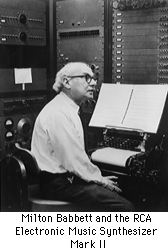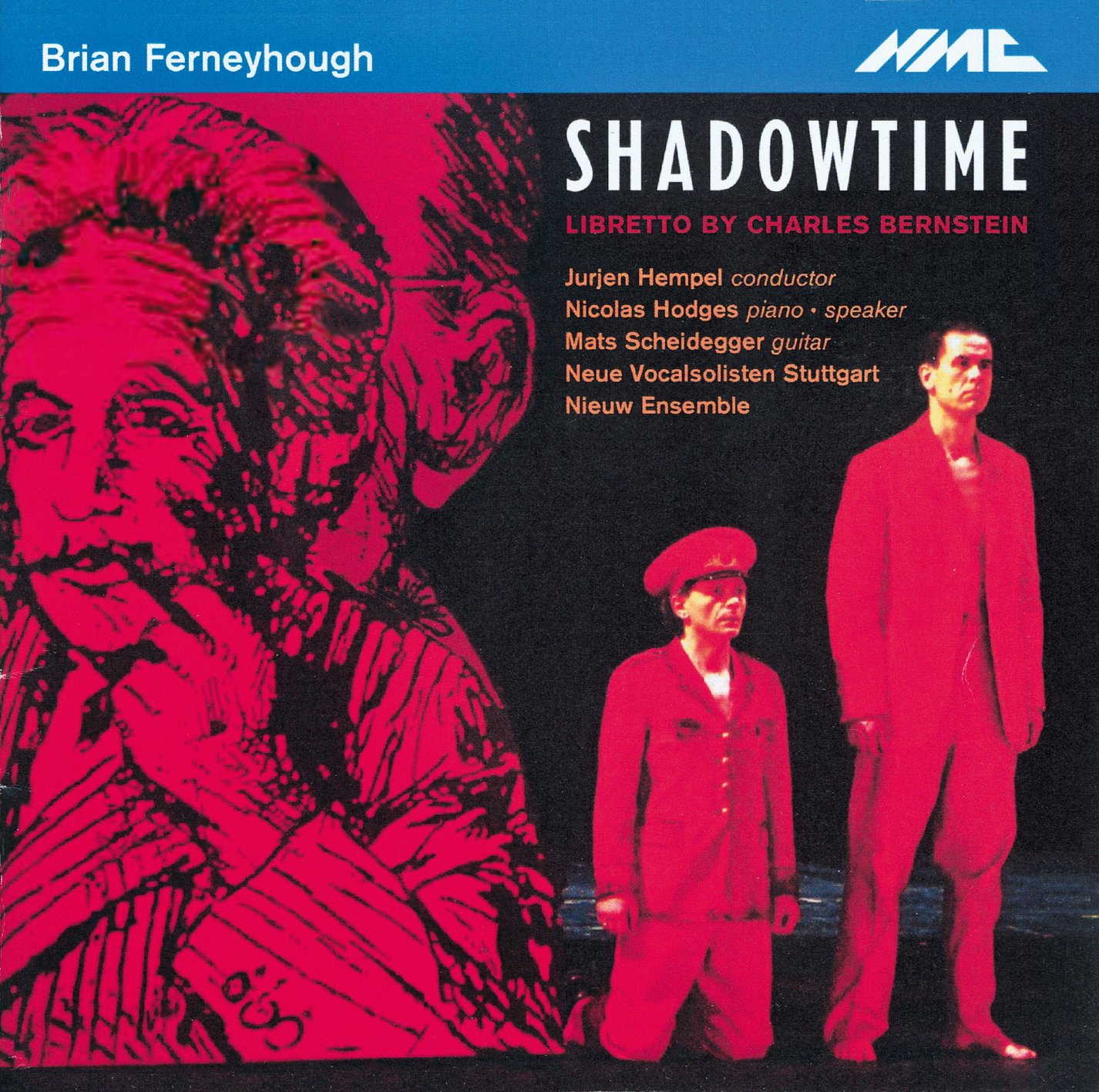 Milton Babbitt non era fra i miei compositori preferiti, ma ne riconosco l’indubbia importanza come pioniere. Ha incarnato il serialismo integrale post weberniano negli USA ed è stato uno dei primi a credere seriamente nella musica elettroacustica fin dagli anni ’50. Qui abbiamo le Occasional Variations, scritte fra il 1968 e il ’71 per il sintetizzatore Mark II della RCA (vedi anche il Synth Museum), una macchina ancora analogica, ma la prima ad essere programmabile via nastro perforato.
Milton Babbitt non era fra i miei compositori preferiti, ma ne riconosco l’indubbia importanza come pioniere. Ha incarnato il serialismo integrale post weberniano negli USA ed è stato uno dei primi a credere seriamente nella musica elettroacustica fin dagli anni ’50. Qui abbiamo le Occasional Variations, scritte fra il 1968 e il ’71 per il sintetizzatore Mark II della RCA (vedi anche il Synth Museum), una macchina ancora analogica, ma la prima ad essere programmabile via nastro perforato.
Born in 1916 in Philadelphia Pennsylvania, has been one of the most prominent musical figures of the 20th century. His pioneering work with electronic tape, synthesized sounds, and his development of serial composition have established an essential place for him in musical history. As composer, writer, and teacher, he has greatly influenced the most important composers of his time, as well as created controversy, challenging his audience to rethink their very definition of music, and the relationship between a creative artist and his public.
Babbitt studied violin, clarinet, and saxophone as a child, but wished to follow his father’s footsteps and become a mathematician. He began his studies in math at the University of Pennsylvania, but soon felt a pull towards music as a career, these aspirations taking him to New York University where he studied composition, becoming very interested in the twelve-tone music. His studies then took him to Princeton University where he was a student of Roger Sessions.
He soon developed his own method of composing with the twelve-tone techniques of the Second Viennese School. In addition to pitch, he arranged other musical elements into a series, such as dynamics and rhythm, creating a “total serialism.” That and the introduction of other complex mathematical principals result in a dense and highly textured music. His innovations invited the attention of musicians, composers, and historians around the world, although these “complex, advanced, and problematical activities,” as he would call them, tended to alienate the public.
Babbitt has strong beliefs about his creative process and his relationship to his audience. He adopted the philosophy of Roger Sessions, who said that composers must:
abandon resolutely chimerical hopes of success in a world dominated overwhelmingly by ‘stars’, by mechanized popular music, and by the box-office standard, and set themselves to discovering what they truly have to say, and to saying it in the manner of the adult artist delivering his message to those who have ears to hear it. All else is childishness and futility.

